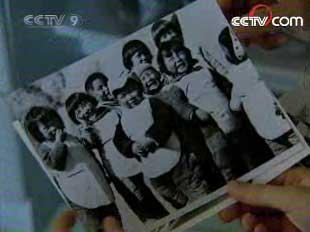Source: CCTV.com
01-28-2008 11:07
Yanan - Hope from Hardship (II) >>
 |
China’s grueling long march is a topic often heard about in the west, but what is less well-known is the revolutionary base established afterwards. This a place called Yan’an. Despite the on-going war and the revolutionaries living with the basic necessities, Yan’an cultivated a spirit that produces some of the happiest , most unforgettable moments in China’s collective memory. In this show, we’ll unlock the magin in Yan’an that made it more than a revolutionary base, but a place where hope emerges from hardship.
Yanan is located on some of China’s most ancient land, in a northwestern province called Shaanxi. During WWII, it was a revolutionary headquarter which led to the victory against Japanese aggressors as well as Chinese liberation.
Shu Xiaoming is a retired professor from the Beijing Film Academy. She recalls her early childhood experiences spent in Yanan. At age 2, she attended one of the local nursery schools.
Many orphans and children of former revolutionaries from all over the country sought shelter from the war-torn landscape, and so arrived in Yan’an. Former Premier Li Peng was the son of a martyr, a child refugee who arrived in Yan’an when he was a boy of just 13.
Shu said, “The east face of the hill had the Yan River below.We would get up every morning to bask in the sunshine in front of the caves.”
Caves were the typical residences of people living in Yanan and surrounding areas of China’s northwestern Loess Plateau. In adapting to the region’s climate and terrain, many families still live in such cave dwellings today.
If you look around, it is still possible to find cave dwellings that remain untouched from the revolutionary times.
this is a typical cave dwelling during the revolutionary period in Yan’an. It was actually carved out into the side of a mountain. The tall walls arched about 10 feet, leaving just enough space to small tables, a few stools and a bed behind me. It’s very raw and quite basic.
Besides being homes, these caves were also used as classrooms. The conditions were rough, as Shu Xiaoming can clearly recall.
Shu said, “Life in those days was really rough. We had just enough foodstuffs for us to eat three meals a day. Other than that, we had barely anything.”
But there were times and activities that would cheer the children up
Shu said, “Everyday at dusk when it began to get dark, people would have light in their caves. Yan'an is in a mountainous area. The cave homes were mostly located half way up the hills. Some were located higher up, some lower. At dusk when people stopped working for the day, they would start to sing folk songs. You would see scattered points on the hill light up, and hear singing coming out of the lit-up caves. It felt so romantic.”
